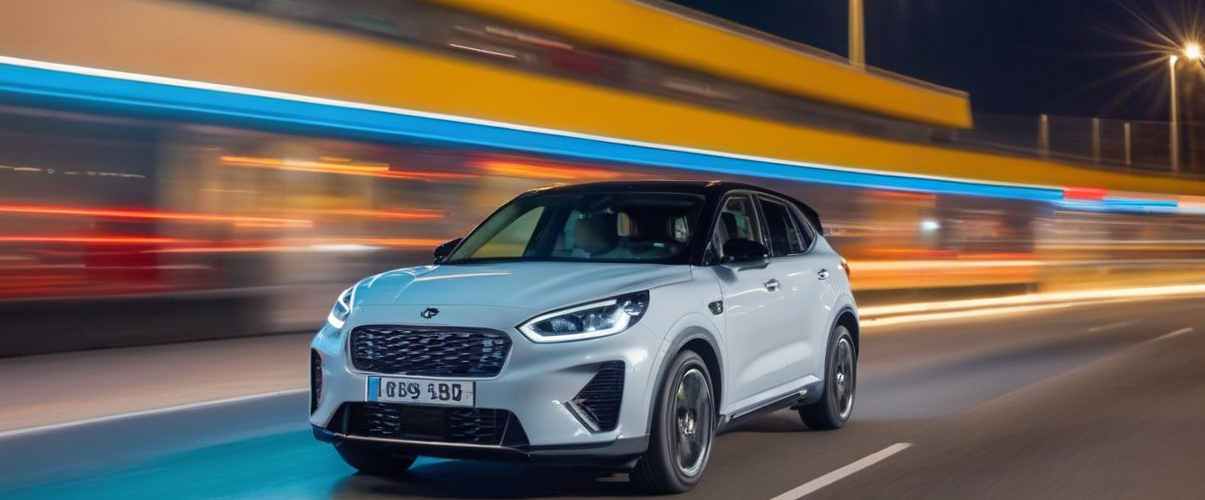What's the difference between rolling shutter artifacts and motion blur?
Rolling shutter artifacts and motion blur are two of the major image quality problems that can be encountered in camera module imaging. Until then, perhaps many people often confuse the two. Although both occur when photographing moving objects, the cause of motion blur has nothing to do with rolling shutter. There is also an argument that global shutter cameras eliminate rolling shutter artifacts and motion blur, but this is not to be believed in its entirety. Earlier we learned the difference between global shutter and rolling shutter for those who are interested.
So in this blog, we will slowly unravel the difference between the two and why global shutter cameras can't eliminate motion blur.
What are rolling shutter artifacts?
Rolling shutter artifacts are caused by the rolling shutter mechanism. rolling shutter artifacts occur when the scene being photographed or the camera itself sends rapid movement, and because the image is captured line by line, each line in a frame has a different exposure time. This time the output image will have image distortion, distortion and other problems.To learn about image distortion, check out this article.
Common manifestations include the following:
- Jelly effect: Image shaking or tilting, especially noticeable in video clips shot handheld.
- Skewed lines: Vertical lines become skewed when the camera is moved horizontally.
- Partial exposure: The flash or strobe may cause parts of the image to be overexposed or underexposed.

Ways to mitigate rolling shutter artifacts
We have already mentioned at the beginning of this article that cameras with a global shutter mechanism can effectively mitigate rolling shutter artifacts. This is indeed the most effective solution today. All rows of a frame in a global shutter camera get exposed at the same time, their exposure starts and ends at the same time, so rolling shutter artifacts are not possible. In addition to this, we can also minimize the amount of fast movement required when shooting and by choosing a high-end camera with a faster sensor readout.
What is motion blur?
Motion blur is a blurring or trailing effect that occurs when the subject or camera moves during the exposure time of a photograph. This blur is caused by the sensor's inability to accurately capture the sharp, still moments of a moving subject or camera module. Also, the longer the exposure time, the greater the likelihood of motion blur. And motion blur increases as the speed at which the object is moving increases.

Methods for resolving motion blur
Unlike rolling shutter artifacts, motion blur is not caused by the continuous scanning of the sensor, but by the limitations of the camera's exposure time and the movement of the subject or the camera during that time period.
We can therefore conclude that the solution to eliminating motion blur is to reduce the exposure time, i.e. increase the shutter speed. By ensuring that the image is exposed for a short period of time without significant displacement changes in the object, motion blur caused during a single shot can be reduced.
Of course, you need to consider the speed of movement of the target and the distance between the camera and the object when determining the shutter speed. And one thing to keep in mind is that when the shutter speed is too fast, it may result in an underexposed picture if the lighting conditions are poor. Therefore, lighting conditions need to be taken into account when checking the shutter speed.
What is the difference between rolling shutter artifacts and motion blur?
Understanding the difference between rolling shutter artifacts and motion blur is critical for embedded vision applications to improve image quality.
As we have learned above, motion blur is dependent on the length of the exposure time, so it can happen with either global shutter cameras or rolling shutter cameras. Whereas rolling shutter artifacts can be completely eliminated by using a camera with a global shutter mechanism, they are only eliminated with rolling shutter artifacts and motion blur may still occur. It's worth noting that in rolling shutter cameras, both rolling shutter artifacts and motion blur can occur.
We hope this topic has been helpful to you, and if you have any questions about embedded vision solutions, or if you are looking for the right solution for your embedded vision application, please feel free to contact us - Sinoseen.
Frequently Asked Questions
Q: What is the main difference between rolling shutter artifacts and motion blur?
A: Rolling shutter artifacts are caused by continuous scanning of the camera's imaging sensor, resulting in distortion and warping of the subject. Motion blur, on the other hand, is caused by the subject or camera moving during the exposure time, resulting in a blurred or fuzzy appearance.
Q: Can rolling shutter artifacts be corrected in post-processing?
A: Yes, software-based de-distortion and stabilization techniques can be used to mitigate the effects of rolling shutter artifacts in post-processing. However, it is often best to address the problem at the source by using a global shutter camera or reducing subject or camera movement.

 EN
EN
 AR
AR
 DA
DA
 NL
NL
 FI
FI
 FR
FR
 DE
DE
 EL
EL
 HI
HI
 IT
IT
 JA
JA
 KO
KO
 NO
NO
 PL
PL
 PT
PT
 RO
RO
 RU
RU
 ES
ES
 SV
SV
 TL
TL
 IW
IW
 ID
ID
 SR
SR
 VI
VI
 HU
HU
 TH
TH
 TR
TR
 FA
FA
 MS
MS
 IS
IS
 AZ
AZ
 UR
UR
 BN
BN
 HA
HA
 LO
LO
 MR
MR
 MN
MN
 PA
PA
 MY
MY
 SD
SD















